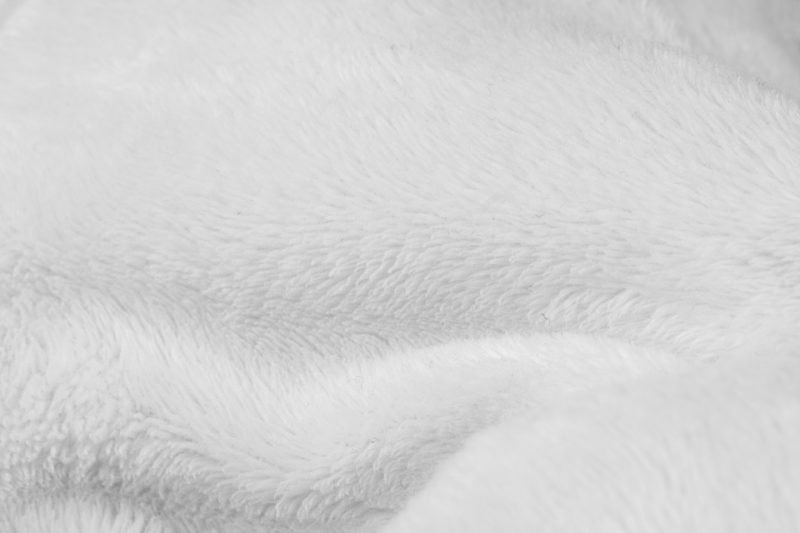The answer to what is batting used for in sewing is it’s a cushioning material. You use it for various projects such as quilts.
This article will teach you the uses of batting and how to sew it on. We’ll also talk about the materials that can be used for batting, including potential alternatives.

Since quilts often use batting, why not learn how to sew a quilt with a sewing machine as well? There are techniques to make these big projects easy, regardless of the type of machine you have.
What Are The Use Of Batting In Sewing?
Batting is a material you put between fabric layers to add cushioning and insulation. The thickness also enhances the texture and changes the loft of the project.
You can buy batting according to blanket sizes or by the yard in most fabric shops. It can either be made from cotton, polyester, wool, silk, or bamboo fibers.
You can also differentiate batting based on their lofts. And as for the projects, quilts are the most common ones that will need batting, but they can also be added to potholders, rugs, and bags for the same reason.
Batting vs wadding
Batting is the same as wadding, but the latter is the term commonly used in the UK and Australia.
What is the loft of batting?
Batting comes in different lofts, which refer to its weight and thickness. A low loft batting is thin batting, and a high loft batting means it’s thick.
A low loft batting is typical for mats, while quilts and blankets that need to be insulating will need a high loft batting. The thinnest loft batting is bamboo, while the thickest or heaviest batting is wool.
If you need the project to drape well, your option would be bamboo or polyester batting. But if you want a thicker and stable shape, you can select cotton or wool batting.
What Are The Types Of Batting?
Based on fibers
- Cotton batting is a natural batting about ⅛ inch thick and offers softness and breathability.
- Polyester batting is preferred for bedding because it’s cheap, provides warmth, and resists mold and mildew.
- Wool batting is about ½ inch thick, making it excellent for quilting and providing loft while resisting creases.
- Bamboo batting is ideal for people who prefer eco-friendly materials, but it’s also durable enough for machine quilting and washing.
Based on production
- Needle punch batting is an excellent choice if you need a durable backing because of its firmness and density from being felted together by needles.
- Bonded batting will resist getting clumpy and shifting because it has adhesive on both sides.
- Fusible batting is used for projects where you baste layers, such as in quilts because it has a fusible web.
Based on size
- Crib: 45 x 60 inches
- Twin: 72 x 90 inches
- Full : 81 x 96 inches
- Queen: 90 x 108 inches
- King: 120 x 20 inches
Why Do You Need Batting?
- To add weight for stability and structure
- To provide warmth when used in projects like blankets and quilts
- To enhance loft and softness for comfort
- To provide texture for the project’s final look
How Do You Use Batting Fabric?
To add thickness
Use the correct batting loft for the thickness you want to achieve. For example, a low loft batting like cotton leads to a flat finish, while a high loft batting like wool will be perfect if you need dimension or fullness for the project.
For warmth
Select wool or cotton if you want the batting for insulation or even synthetic ones like polyester for outerwear. However, you want something breathable such as silk batting for some clothes.
How Do You Sew Batting?
- Prewash the sewing fabric and iron it afterward to remove creases before sewing the batting to it
- Cut the batting according to the size of the quilt
- Put the batting over the fabric and align it properly
- Layer the batting with the backing material
- Pin the layers together from the center with a straight line around 18 inches apart
- Add pins parallel to the first ones for added stability
- Check for wrinkles
- Sew along the pinned lines with a sewing machine using the correct needle, thread, and setting
- Work from the center of the quilt outward
- Trim the excess batting and smoothen the quilt
What Can I Use Instead Of Batting?
Fleece sheet
The most common and best alternative for batting is a fleece sheet. It provides softness and thickness, but remember to prewash it before sewing the quilt together since it shrinks.
Cotton sheet
Even if you don’t have cotton batting, you can use a cotton sheet if you don’t have a batting. Likewise, you can use a cotton blanket as long as it has enough structure to stabilize your layers.
Old quilt
You can reuse old quilts or blankets in place of the batting in a quilt. Select intact materials from these old items to provide thickness, softness, and warmth.
Conclusion
Was this article helpful? We just discussed what is batting used for in sewing and revealed it’s a material that comes in various fiber and loft types to provide thickness, insulation, and texture to projects like quilts and more.
It’s relatively easy to sew it to fabric layers as long as you align them correctly. You can also use cotton and fleece sheets as alternatives if you don’t have batting.
If you have more questions, feel free to leave them below.
